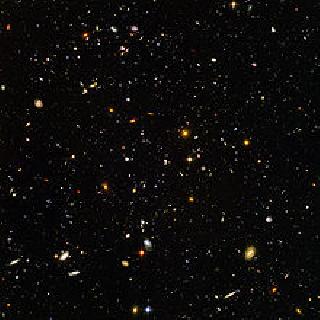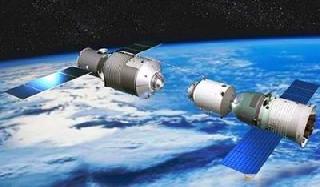
WASHINGTON (PTI): Astronomers have discovered two clouds of gas which they believe were formed in the first few minutes after the Big Bang that created the universe.
The discovery, the first to detect these gas clouds, adds more support to what is already the most widely accepted theory of how our universe came to be, the astronomers said.
The primordial gas clouds were found to contain only the lightest elements -- hydrogen and helium -- that were created in the Big Bang. And according to the researchers, few hundred million years later, clumps of these gas clouds condensed to form the first stars, which created and dispersed heavier elements throughout the universe, SPACE.com reported.
The new observations appear to match the theoretical predictions about the chemical makeup of the early universe, said study leader Michele Fumagalli, a graduate student at the University of California, Santa Cruz (UCSC).
"It's actually a very nice confirmation of the theory, because the theory predicts that in the first few minutes after the Big Bang, things like hydrogen and helium were produced and no metals," Fumagalli said.
"So, this is the first time that we have a very strong observation and evidence that indeed this theory is correct.
It's good news for cosmology."
Previously, astronomers had detected the presence of heavier elements, such as carbon, oxygen, and silicon, throughout the universe. So, finding these "pristine" gas clouds, with their complete lack of heavy metals, was a surprise.
"As hard as we've tried to find pristine material in the universe, we have failed until now," study co-author J Xavier Prochaska, a professor of astronomy and astrophysics at UCSC, said in a statement.
"This is the first time we've observed pristine gas uncontaminated by heavier elements from stars."
The researchers, who detailed the findings in the journal Science, discovered the two primordial gas clouds by analysing the light from distant quasars, the brightest objects in the cosmos.
Quasars are regions around supermassive black holes where lots of material is being gobbled up, which simultaneously release brilliant light into space.
By looking at distant objects, astronomers are able to see far back in time, because of the time it takes for light to travel across the universe.
The researchers examined the light from quasars using the Keck I Telescope in Hawaii. The spectrometer of the telescope separated the light from the quasars into a spectrum of different wavelengths.
This allowed the researchers to examine which wavelengths had been absorbed, which gave them clues about the composition of material that lies between the distant quasar and the telescope on the ground.
"What we do is look in the spectrum for parts that are missing," Fumagalli said. "This is because in between the quasar and us is gas, which is the gas that we want to study.
 Previous Article
Previous Article Next Article
Next Article













The Indian Air Force, in its flight trials evaluation report submitted before the Defence Ministry l..
view articleAn insight into the Medium Multi-Role Combat Aircraft competition...
view articleSky enthusiasts can now spot the International Space Station (ISS) commanded by Indian-American astr..
view article